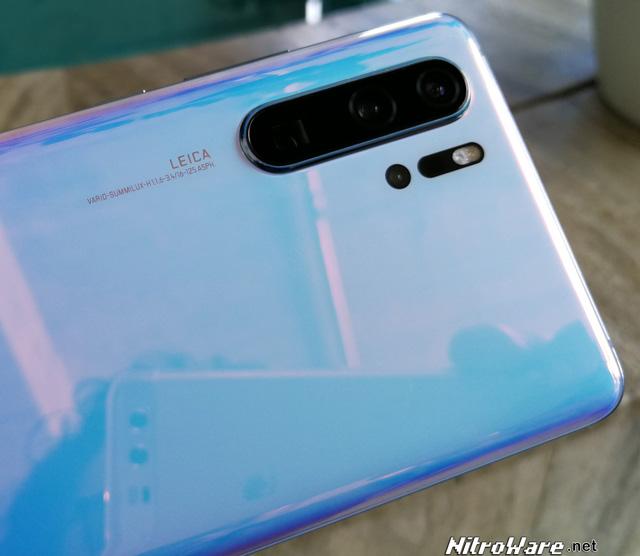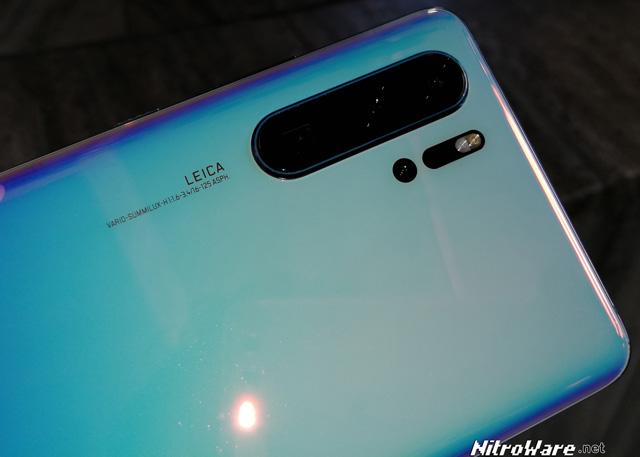- Huawei P30 Hands-On
- Crucial MX500 1TB SATA Solid State Drive Review
- Intel’s flawed ‘Rangeley’ Atom C2000 processors are still a ticking time bomb
- Eric Broockman Extreme Networks CTO Interview
- Introducing the D-Link COBRA AC5300 Wave 2 MU-MIMO Wi-Fi Modem Router and Triple Band Wi-Fi explained
- VICHYPER - Australian Hyperloop Interview and Tour
- Kaspersky Keynote and Press Conference - Sydney 2017
- ZOTAC NVIDIA GeForce GTX 1050 Australian Review
- Intel Core i7 Extreme Edition (Codename: Broadwell-E) Processor Australian Review
- ASUS ROG GX700 Liquid Cooled Gaming Laptop Video Preview and Analysis.
- Video Tour - NitroWare experiences HP's new Australian Customer Experience Centre and Intel 6th Gen ‘Skylake’ PCs
- Bose SoundTouch 2015 Wireless Speaker Preview
- NVIDIA GeForce Experience Quarter 4 2015 Update Analysis
- NVIDIA GEFORCE GTX 980 Ti Australian Review - TITANic graphics performance for US $649
- HP Zvr 23.6-inch Virtual Reality Display First Look
- NVIDIA GeForce GTX TITAN X Video Card Australian Review
- Battlefield Hardline - Developer Q&A with Visceral Games
- The NVIDIA GEFORCE GTX 960 REVIEW - EVGA SSC Edition
- NVIDIA'S GEFORCE GTX 980 Apollo 11 Lunar Landing Tech Demo tested
- Monster Cable Premium Black 27.7 Gbps high bandwidth HDMI 2.0 cable test
- 4th Gen Intel Core "Devil's Canyon" Processor Family Preview
- Seagate Business 4-Bay 16TB NAS Review
- MSI Radeon R9 270X HAWK & GeForce GTX 760 HAWK Video Card Review
- Adobe Photoshop CC and AMD Radeon GPU Smart Sharpen Benchmark using OpenCL
- AMD Radeon R9 290X Video Card Review and Analysis
- Never Settle: Forever game bundle: What you need to know and what AMD could have done differently.
- Intel 4th Gen 'Haswell' real world gaming performance
- An Evening with Battlefield 4
- Intel 4th Gen Core i7-4770K 'Haswell' CPU Performance Review
- Our experience with AMD's Never Settle Reloaded game bundle - Trouble with Ubisoft Uplay | Updated
- Crucial MX500 1TB SATA Solid State Drive Review
- ZOTAC NVIDIA GeForce GTX 1050 Australian Review
- Intel Core i7 Extreme Edition (Codename: Broadwell-E) Processor Australian Review
- NVIDIA GEFORCE GTX 980 Ti Australian Review - TITANic graphics performance for US $649
- NVIDIA GeForce GTX TITAN X Video Card Australian Review
- The NVIDIA GEFORCE GTX 960 REVIEW - EVGA SSC Edition
- NVIDIA'S GEFORCE GTX 980 Apollo 11 Lunar Landing Tech Demo tested
- Monster Cable Premium Black 27.7 Gbps high bandwidth HDMI 2.0 cable test
- Seagate Business 4-Bay 16TB NAS Review
- MSI Radeon R9 270X HAWK & GeForce GTX 760 HAWK Video Card Review
- Adobe Photoshop CC and AMD Radeon GPU Smart Sharpen Benchmark using OpenCL
- AMD Radeon R9 290X Video Card Review and Analysis
- Intel 4th Gen 'Haswell' real world gaming performance
- Intel 4th Gen Core i7-4770K 'Haswell' CPU Performance Review
- Our experience with AMD's Never Settle Reloaded game bundle - Trouble with Ubisoft Uplay | Updated
- Huawei P30 Hands-On
- Introducing the D-Link COBRA AC5300 Wave 2 MU-MIMO Wi-Fi Modem Router and Triple Band Wi-Fi explained
- ASUS ROG GX700 Liquid Cooled Gaming Laptop Video Preview and Analysis.
- NVIDIA GeForce Experience Quarter 4 2015 Update Analysis
- HP Zvr 23.6-inch Virtual Reality Display First Look
- 4th Gen Intel Core "Devil's Canyon" Processor Family Preview
- Intel 4th Gen Core Haswell CPU and Graphics Preview - See the future of PC graphics through Intel's Iris.
- Cooler Master's Trigger keyboard might just be the perfect gamers keyboard
- ZOTAC "Inner-Beauty" Small Form Factor PC Preview featuring Z77-ITX WiFI and GeForce GTX 680 AMP! Edition
- Intel Desktop Board DX79TO Preview | Sandy Bridge-E performance on a budget
- Gigabyte GZ-X1 Mid Tower ATX Computer Case Preview
- Telstra Turbo 7 Series 3G Wireless Gateway - First Impressions
- Lian-Li Tyr PC-X2000 HTPC/Gaming Chassis Preview
- Intel’s flawed ‘Rangeley’ Atom C2000 processors are still a ticking time bomb
- Never Settle: Forever game bundle: What you need to know and what AMD could have done differently.
- Price Gouging – Australians pay up to twice as much for Microsoft Windows 7 Anytime Upgrade but not for Windows 8 than the US
- Intel CPU Protection Plan for overclockers – Ploy or Promise ?
- Where did all my printer ink go? Part 2 - Epson
- Where did all my printer ink go? Part 1 - Brother
- How to install Windows Server 2008 R2 or Windows 7 using a LSI 3ware 9650SE RAID card
- Issues with Realtek High Definition Audio device driver for Windows XP
- The front audio ports on my PC do not work – why is this and how can I fix this?
- How to create a dedicated Voice over IP headset for your PC - for free. Part 2.
- How to create a dedicated Voice over IP headset for your PC - for free. Part 1.
- Computer motherboard buyer guide - ECS X48T-A
- Making the most of dual onboard Ethernet ports
- How to fix IEEE 1394 FireWire Networking in Windows XP SP3
- DivX 6.5 crashing fix
- Eric Broockman Extreme Networks CTO Interview
- VICHYPER - Australian Hyperloop Interview and Tour
- Kaspersky Keynote and Press Conference - Sydney 2017
- Video Tour - NitroWare experiences HP's new Australian Customer Experience Centre and Intel 6th Gen ‘Skylake’ PCs
- Bose SoundTouch 2015 Wireless Speaker Preview
- Battlefield Hardline - Developer Q&A with Visceral Games
- An Evening with Battlefield 4
- CeBIT Australia 2012 Preview
- Trick or Treat – we bring you tech candy, err the latest Intel X79 Motherboards and other goodies
- Netgear introduces fully open-source Wireless-N Gigabit Router | Cebit Australia 2009
- Exclusive - Altec-Lansing shows off new speakers for 2009 at CeBIT Australia
- CeBIT Australia 2008 | Mtron claims to have worlds fastest Solid State Drive
- Sennheiser @ CeBIT Australia 2008
- Plantronics and Altec Lansing @ CeBIT Australia 2008
- Panasonic @ CeBIT Australia 2008
Huawei P30 Hands-On
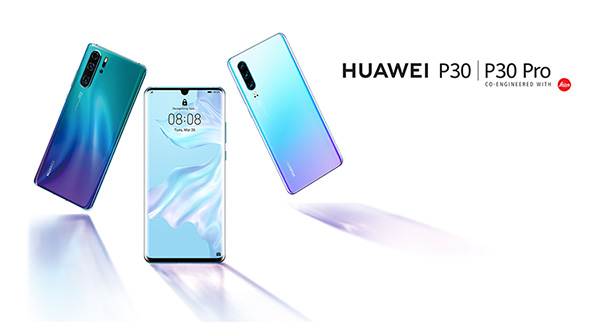
NitroWare.net was given an exclusive hands-on preview of the Huawei P30 and P30 Pro phones before their worldwide unveil in Paris on March 26.This time around, Huawei has outdone itself again with their hardware evolution and technical prowess with attention to in product engineering and silicon design. P30 continues the trend set the past few years with each of the previous P series devices.
Although my first impressions are based on very limited time with the P30 and despite it including some innovative and industry leading features which I will go into detail further in this review, I don’t think the P30 is a slam dunk over its competitors especially the Samsung S10 series but don’t write it off just yet.
Our preview experience was intended to give us some hands on time with the new camera system as well as having a look and feel of the device. We were not able to run any benchmarks or do any in depth analysis or testing of the device due to conditions of the preview and the available time. Huawei is not fully ‘at fault’ here, it just reality that one of the main uses of a modern smartphone in western society is photos and videos. We are all reliant on our phone camera it so it would be pointless to deny a primary use of a modern smartphone.
Huawei themselves are advertising the phone with the following words “REWRITE THE RULES OF PHOTOGRAPHY, Brighter, wider and closer. See the world from new perspectives. Discover the unseen surprises and turn them into your treasured memories. The HUAWEI P30 is pushing the envelope of smartphone photography.”
READ ON to see my sample photos taken with the P30 Pro against the P10 Plus and the moto g6+ in a variety of photographic scenarios as well as my thoughts on the new Huawei flagship that many commentators are raving about...
Crucial MX500 1TB SATA Solid State Drive Review
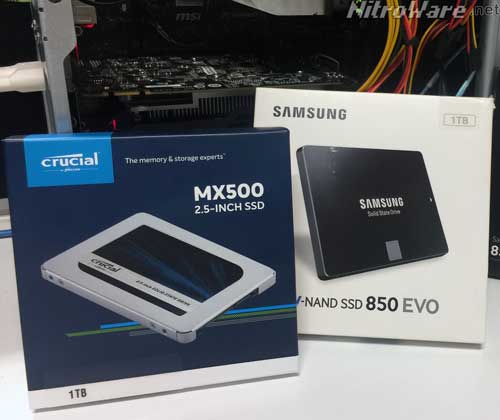
Crucial's MX500 using their 2nd Generation of 3D NAND delivers higher density and cheaper Solid State Storage, improved performance and higher endurance and warranty. We compare the MX500 to the MX300, Samsung's 850 EVO and Intel's 520 series in design, performance and price; explain what is wrong with SSD reviews in general and look at the price difference worldwide between Crucial and Samsung drives including the 860 series. Importantly we try to answer the popular question "Is Crucial as good as Samsung?"
Overall MX500 did deliver an improvement in performance over its previous generation but it is still a touch behind the 850 EVO. However given it is cheaper than both 850 EVO and 860 EVO with the 850 quickly becoming unavailable, the MX500 is our pick for now. Read on for our complete review.
Intel’s flawed ‘Rangeley’ Atom C2000 processors are still a ticking time bomb
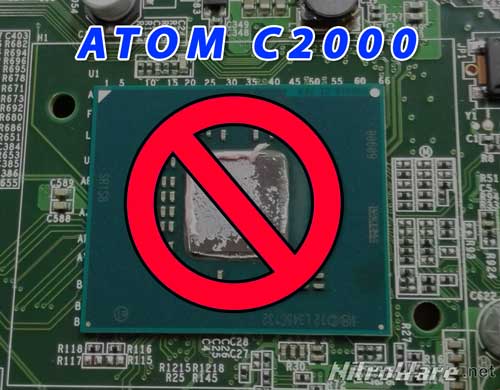
Our year long investigation through 2017 reveals difficulty and complexity obtaining support from the manufacturers of mission critical devices using the faulty Intel chip.
Eric Broockman Extreme Networks CTO Interview
We talk about the future of networking with the chief technical and engineering officer of a newly minted enterprise networking giant.The ‘new’ Extreme Networks is the ultimate culmination of the enterprise networking divisions of several well established and significant telephony and networking brand names, mainly Extreme Networks, Brocade and Avaya with the ultimate goal to create a combined company aiming to be number 3 in the enterprise networking sector and a combined revenue of US $1bil.
To update users and partners on the new company and changes to products and support, Extreme did the typical world tour but with a difference.
Unusually for a large tech vendor, Chief Technical and Engineering Officer, Eric Broockman made himself available to said users and partners as a gesture of new company’s intention. The co-title ‘Engineering officer’ is unique, as a Chief Technical Officer is not necessarily an engineer or responsible for engineering. Eric told us that a typical day started with a small amount of ‘CTO’ work and the rest of the day was overseeing engineering and in this role he has been able to leverage his vast experience with other networking hardware vendors.
We sat down with Eric and chatted about future of networking from a wireless, wired and software perspective. Eric had some very interesting viewpoints on industry trends thanks to his unique position in the industry both as a CTO and a long time veteran of several networking and tech firms, even as a hairbrush salesman.
You do not need to be intimately familiar with Extreme/Brocade/Avaya products or enterprise networking to watch this interview but an understanding of networking topics and standards would be helpful.
Many of the topics discussed such as Wi-Fi AX, 2.5/5/10Gbit Ethernet, Virtualization and Open Source Networking/Security software are of interest to enthusiasts, power users and professionals.
00:25 Eric Broockman's technical and industry background
03:15 Combining the specialisations of Extreme, Brocade, Avaya and Zebra into the New Extreme Networks
05:20 Campus and Data center Networks explained
06:25 802.11ax Wi-Fi explained - Increasing density and improving reliability
09:25 Hardware versus Software in the Networking Industry and the ubiquitous 'single pane of glass' management concept
10:45 Free and open source software such as pfSense
13:50 Virtualisation - A new concept for Enterprise Networking devices such as Switches and Access Points
17:15 Lowering cost and increasing adoption of upcoming Ethernet Standards such as Nbase-T
20:20 Future Trends and where the Networking industry is going
Read on for our comments on the new company, the aquisitions involved as well as more detail on the future and emerging trends discussed.
Introducing the D-Link COBRA AC5300 Wave 2 MU-MIMO Wi-Fi Modem Router and Triple Band Wi-Fi explained
"They call it the COBRA" - D-Link’s most bonkers DSL modem router yet.
Here D-Link’s latest flagship networking router is previewed and compared it to its Triple band AC3200 Wi-Fi predecessor the Taipan and competitors from Netgear the Nighthawk X8. The benefit of Triple-Band Wi-Fi is explained as are the basic specs around Wi-Fi speeds and numbers are summarised. Plus we have a look at how both the Cobra and the Taipan work internally.
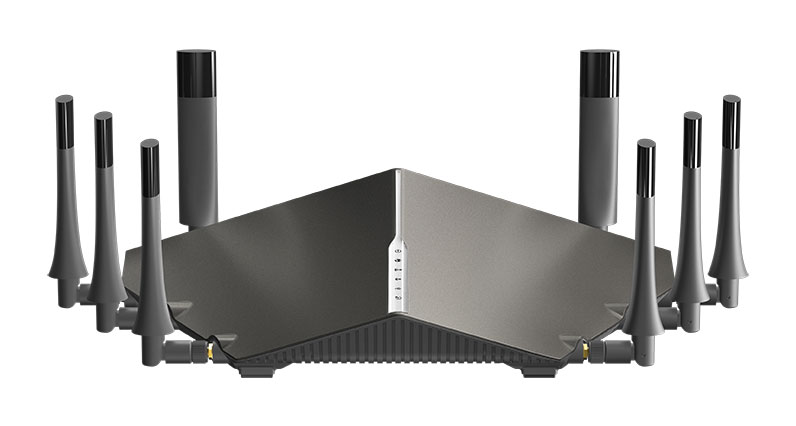
Announced this week is D-Link’s latest flagship DSL modem router (also known as a DSL Gateway) aimed at the early adopters, enthusiast and prosumer audience. This is a very high end unit device not for the faint at heart.
Named Cobra, the DSL-5300 continues the snake themed branding D-Link has applied to its flagship modem routers. 2014 had the DSL-2900AL Viper which was a dual band unit supporting ADSL2+ with AC1900 3x3 Wi-Fi , then we had the DSL-4320L Taipan in late 2015 which was Triple band unit with VDSL2+ and supporting an aggregate of AC3200 Wi-Fi speed over triple brands (600 Mbps for N, 1300 Mbps for 5Ghz AC Band A, 1300 Mbps for 5 GHz AC Band B). Also the AC1600 Python VDSL2 Modem Router
The latest update is the Cobra which enhances the feature set of the Taipan to support MU-MIMO diversity for the Wi-Fi, extra antennas, faster speeds as well as an additional Ethernet port. Also a triple band device, the Cobra now supports 1000 Mbps on 2.4 GHz, and 2167 Mbps both each on 5GHz A and B.
In this article I will compare and contrast these routers, providing an overview of the key differences between them, what to look out for and consider when shopping for a high end modem/router. Since I discuss four triple band Wi-Fi routers, I explain what Triple Band Wi-Fi is and why you may need it. My more technical readers will be interested in the device teardown where I show the main chipsets. For both technical and semi casual audience A summary and overview of Wi-Fi 'speeds and feeds' is provided to help decode the various numbers and acronyms associated with Wi-Fi devices which can be confusing even to those in the networking industry.
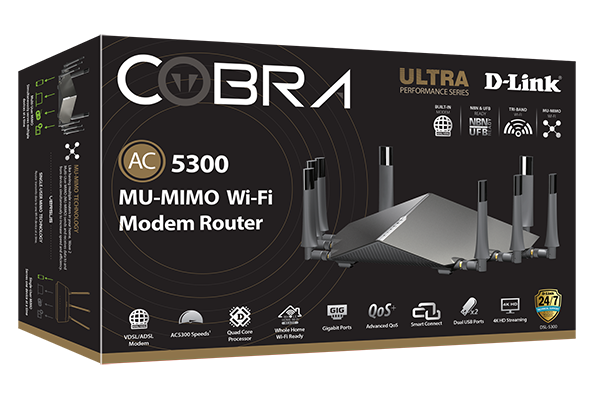
VICHYPER - Australian Hyperloop Interview and Tour
Future transportation concepts, and more recently the ‘Hyperloop’ system proposed by Tesla/SpaceX can be highly controversial, risky and sometimes more of a publicity stunt to advance and promote research and development of a particular government or private enterprise.
‘Hyperloop’ itself is not a new idea by far, it is simply the brand name coined by the joint Tesla/SpaceX team to their implementation, and of those of which to be similar and compatible systems developed by other academic research teams in recent years.
The short of it is that ‘Hyperloop’ is a magnetically levitating train that travels within a vacuum tube instead of free air in order to avoid the resistance of friction
In the case we are reporting on today the train is simply a single passenger-less prototype/test vehicle.
VICHYPER is the student engineer team spun out of RMIT University Melbourne, backed by Australian and International global sponsors from the technology and transportation sectors. Competing in the SpaceX Hyperloop Pod Competition, VICHYPER's efforts were rewarded by being the only finalists from the Southern Hemisphere.
I had the opportunity to see their pod vehicle at CeBIT 2017 and interviewed one of the mechanical engineers on the project where we discussed the concept of maglev and vacuum transportation as well as the design and features of the vehicle and that interview is presented below.
We discuss how the vehicles systems work, the concept of a Hyperloop/vac train and engineering aspects behind the vehicle and system as a whole.
Remebering past 'future' transport research and concepts
While I am proud as an Australian to see the home team trying to beat the yanks at their own game, I have followed this subject personally for some time and I sure do have my own two cents plus tax on the matter.
Almost every form of advanced land transportation developed through the 20th century has failed to get past initial or prototype/demonstration phase. As I am writing this story I am struggling to think of any exceptions to this rule. High Speed Rail, which is conventional steel wheel-on-rail up to 200MPH/350KPH does not count as this is an evolution of conventional legacy technology.
Even if we look at air transportation, supersonic transport was a relative failure if we consider the costs required to run Concorde and its eventual tragic demise plus the epic failures of the Soviet Tu-144 ‘Concordski’ and American Boeing 2707 Super Sonic Transports.
The original objective of all these projects was to commoditise supersonic transport and as of 2017 this has failed to materialise, so we can consider all three a failure despite Concorde being able to turn around its financial woes in its final years.
Atomic powered aircraft also fits into this category, having never progressed past very early initial research stages by both the US Atomic Energy Commission/US Air Force with a converted B-36 Peacemaker bomber that carried an experimental nuclear reactor and the USSR who had a Tu-95 Bear similarly fitted. Nuclear powered Jet Engines were developed and tested by General Electric for the former before the entire program was cancelled.
Getting back down to earth. The 20th century has seen a variety of weird and wacky rail concept vehicles. We had a strange railcar which used a single wheel rather than two wheels on an axle, like a bicycle which self-balanced itself. Obviously this never took off.
In 1931, the German Schienenzeppelin acheived a world record for a petrol powered rail vehiche of 230KMH, which still stands to this day. Yes, the name of the vehicle is apt, given it looks like essentially a zepplin on rails with a BMW aircraft engine and un-protected propeller sticking out the back . Obviously, modern transport does not have large and fast spinning propellers near people for obvious reasons and this concept never took off.
Post World War II there were many land transport concepts which either never got off the drawing board or never materialised into sales other than a prototype/demonstrator vehicle.
Atomic powered trains were conceived but seemed too expensive and problematic in urban areas.
The 60s and 70s especially assisted with an aerospace boom and fuel crisis saw initial developments into alternate wheel on rail propulsion such as gas turbines vehicles, electric monorails, mag-lev and even rocket power.
Some cities have recently demolished their monorail systems, citing age of vehicles/spare parts, inflexibility and poor routing as excuses, despite other cities using the same systems successfully. Sydney, Australia is a guilty party to these claims. In such cases, monorails have been replaced with nothing or light/heavy rail systems.
Mono-Doh!
Some of the more wacky proposals where to dig tunnels through the surface of the earth emerging at some other point on the globe. Large tubular vehicles would carry passengers and cargo through this vacuum tubes with gravity assist and this was supposed to solve all the world’s long distance travel problems.
Nope.
Things got so desperate from a scientific research POV by the early 80s following the oil crisis of the 70s that experiments into modern steam locomotives were conducted. Stabilisation of the fuel market and developments in solid state technology such as Fuel Injection, Emissions control and Traction Control which enhanced fuel economy and performance negated this thinking very quickly
Of all these concepts, it was the European Maglev system which held the most promise to be affordable, green and fast transportation system the future for the citizens, systems promised on every continent. In reality only China built a system in 2004 that carries fare paying passengers to this day but required with heavy support from Germany and the manufacturer Siemens. The original maglev demonstration track in Emsland, Germany that was operational for almost 40yrs, named TransRapid has since been demolished earlier this decade finally cementing the concept as a market failure despite the world overall rail speed record still held by Japanese research maglev vehicle.
So I come full circle back to vac-train and Hyperloop. It’s a reimaging of an old vac train concept we mentioned above. ‘Reports on the internet’ indicate that SpaceX/Tesla test track is rusting away now that competitions have been concluded and even that was not a model of a real world setup.
There are too many environmental, regulatory and cost restrictions to bring a Hyperloop system to reality, but that doesn’t mean one should stop trying. The VICHYPER pod we discussed in this video is full of equipment and in no means possible can fit a person or cargo. The VICHYPER team even wound their own linear motors versus using ‘off the shelf’ parts. We are a long way from this stage, decades, and by then who knows what will happen by then.
At least this concept uses semi proven technology (linear motors, mag-lev) and from that provides a stable basis for ongoing research, other than some pie in the sky revolutionary tech which is still in a theoretical stage.
As far as Australia is concerned, a hyperloop, maglev or conventional High Speed Rail route let alone a network is not happening in the next 10 to 20 years. My lifetime, who knows. Stranger things have happened.
Kaspersky Keynote and Press Conference - Sydney 2017
2017 has been a very eventful year for cyber security, especially when we consider the adventures of Kaspersky lab in the media.
During the second half of 2017, Kaspersky Lab was subject to heavy public criticism by US media outlets and US Government agencies alleging that the firm was involved with Russian intelligence services and that its anti-virus software used for espionage purposes.
Subsequently, the US government banned their software from federal use and Best Buy pulled the product from retail sale.
Kaspersky lab has denied these allegations claiming they were “baseless paranoia” and a “witch hunt”
These allegations further developed via WikiLeaks disclosure in November where it was claimed the CIA was using Kaspersky Lab as a scapegoat for covert cyber activities. In addition, at the same time MI6 raised suspicions as to why Kaspersky software was targeted to specific banking customers.
In a world of fake news, stories like these are a daily occurrence on the web and we have to take the good and the bad, analysing them based on merit and fact.
First-hand information and reporting on the party/company concerned can go some way to evaluating such claims.
Kaspersky lab CEO/Founder Eugene Kaspersky visited Sydney, Australia in May 2017 to give the keynote address at the CeBIT expo. Eugene’s talk focused on Key cyber security issues for critical infrastructure, covering operating systems, banks, IoT, SCADA, Power Grids, Transportation and financial services
Eugene himself and regional executives from Kaspersky Lab also participated in a press conference with Australian technology media addressing current security topics and developments at Kaspersky. Topics covered in this Q&A session range from IoT/Critical Infrastructure, AI, US Election Hacks, Ransomware, Government Regulation, State Sponsored/Professional Cyber-attacks, Cyber weapons and gangs, human factors in security and Australian government's attention to Critical Infrastructure security.
00:05 Defining Critical Infrastructure, IoT and Smart Grids
01:20 Future AI threat defence
02:40 Alleged Russian interference with US Election
04:30 Wannacry prevention and rise of Ransomware business
08:30 Government licensing and regulation for cyber security
10:40 Achieving immunity against cyber risks & Kaspersky OS for Network Devices
14:20 What mobile phone does Eugene Use/Phone OS Security
16:10 Government struggles with Cyber Security despite investments
17:15 business/industry vulnerability to state sponsored & professional cyber-attacks and attacks on Australia
23:00 Social issues of Cyber Gangs poaching young engineering talent and Industrial Hacking
26:00 Cyber Weapons and Government Cyber Divisions
26:50 Humans versus consumer product security
29:50 Aust. Govt on critical infrastructure security
NVIDIA readies high-performance content creation driver for TITAN Xp
SIGGRAPH 2017: NVIDIA powers content creators.
In conjunction with their new “bringing AI to graphics” initiative which is tied to the introduction of their new AI optimised Volta based Tesla V100 GPUs, NVIDIA will deliver a new driver to bring Quadro like speed-ups for pro apps like Maya and Vegas targeted towards TITAN X and derived graphics cards.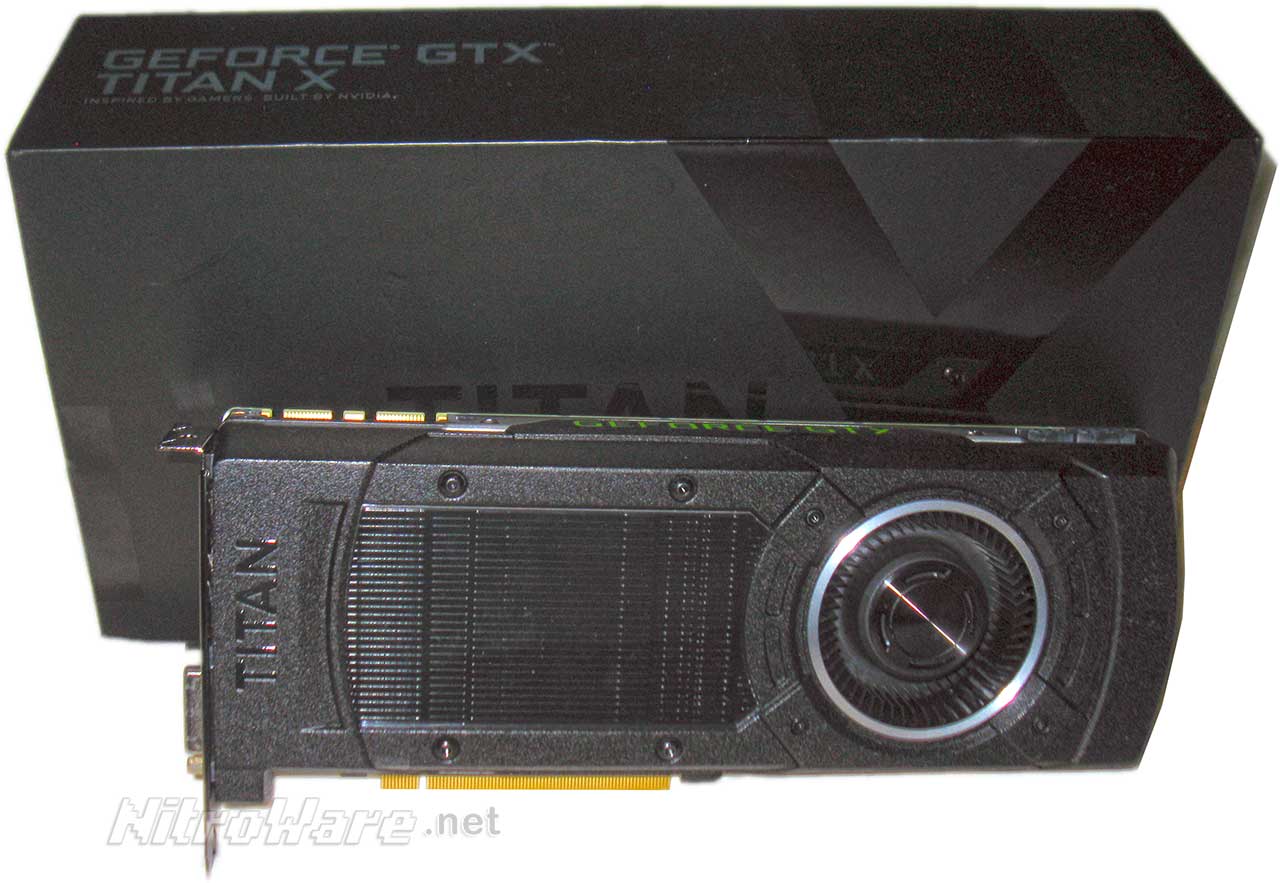
With AMD recently clearly segmenting its graphic card line into gaming/enthusiast (Radeon RX), semi-professional (Radeon PRO) and HPC (Radeon Instinct) and eliminating the previous professional rendering FirePro brand line from the line-up, this has left NVIDIA and specifically its TITAN Sub brand in a dilemma. The industry has been waiting for NVIDIA to react and rectify the situation and as of SIGGRAPH 2017 conference, the GPU vendor apparently has, though future testing will confirm.
As enthusiasts may already know, the original ‘Kepler’ Based TITAN boards offered hardware support for dual precision (64-bit) floating point calculations, as well their native higher performance via clocks, memory bandwidth and total memory capacity. As additional TITAN models were released on newer generation GPUs such as Maxwell and Pascal, these hardware benefits were mainly lost leaving only clocks and memory size.
Releases of Ti (Titanium) edition GEFORCE cards such as 980 Ti and 1080 Ti typically challenged the existence of these TITAN boards, not to mention the branding cluster-f* the last few TITAN boards have had (TITAN X, TITAN XP but not really a p and finally TITAN Xp...)
NVIDIA has always carefully tried to keep the GEFORCE/TITAN line-up separate to QUADRO against some market forces, constantly insisting their more expensive, highly profitable and exclusive to purchase TITAN boards are meant for individuals who wish to do ‘deep learning’ and not gaming only. But again, these only offer the standard GEFORCE hardware feature set, the small minority who needed double precision could not use the TITAN boards.
Additionally, some display options such as 10-bit colour output, despite originally only supported on QUADRO were cascaded down to GEFORCE, and since Pascal, we have the new Half Precision 16-Bit Floating Point calculations support for specific AI loads which don’t need higher resolution.
Anyway, AMD’s introduction of a semi-professional tier of boards through their Radeon Pro, Duo (both on Polaris architecture) and Frontier Edition (Vega) boards offered the end user a choice of professional drivers and software plugins such as AMD's own accelerated “ProRender” for MAYA plugin.
AMD also endorsed benchmarks for these boards that emphasised professional and content creation apps, such as those measured using the SPECViewperf set of industry benchmarks including CATIA, MAYA, Solid works, Dassault and other packages. Rounding off the set is the more commonly used Premiere Pro, Vegas, Blender and Cinema4D renderers
In virtual response to AMD’s direction, we have been advised by NVIDIA that they will have a driver available at the end of this week to accelerate MAYA and VEGAS Pro ‘among others’ specifically targeted to the TITAN Xp flagship Pascal based card.
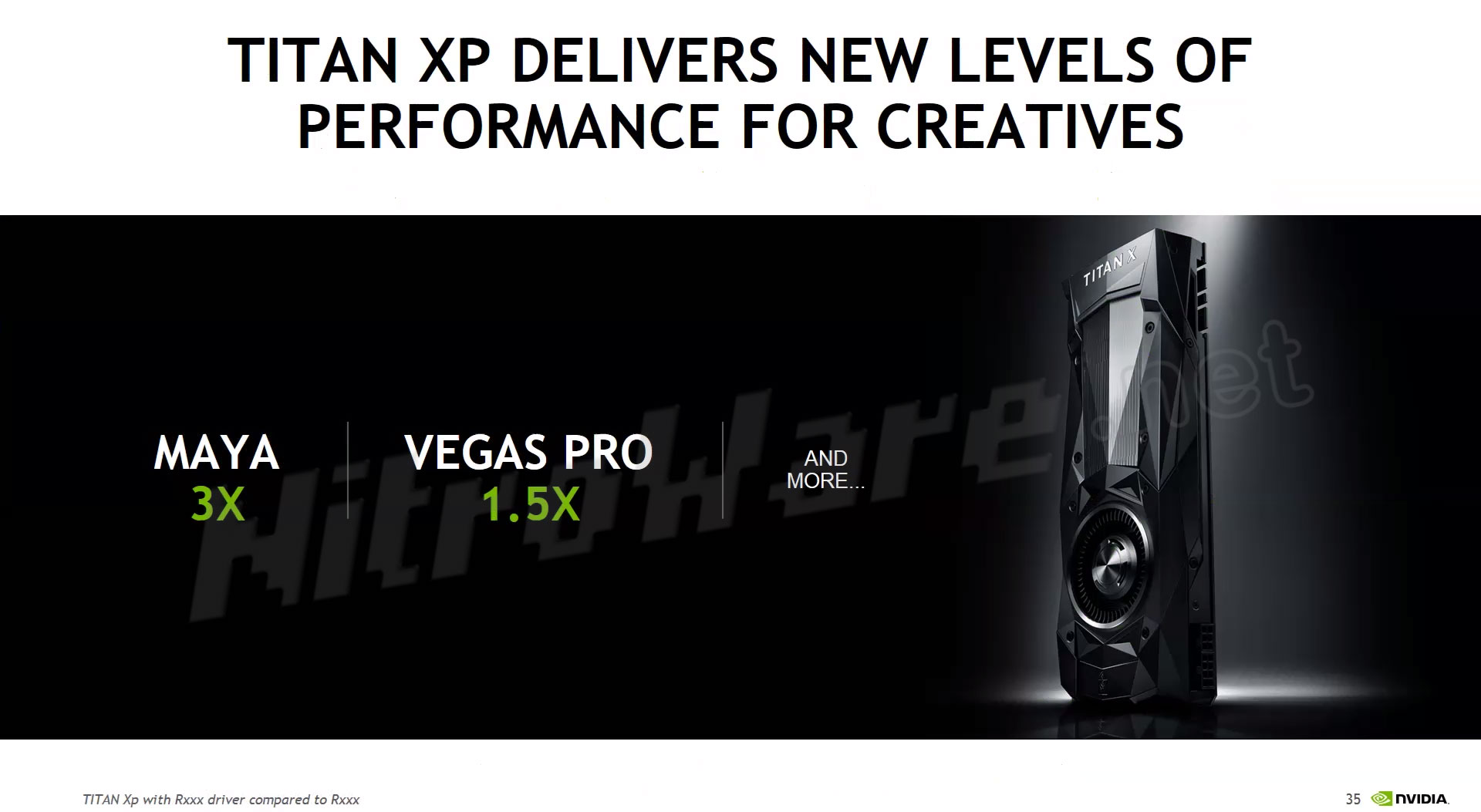
When NitroWare enquired with NVIDIA as if this content creation driver would be hard locked to TITAN Xp we were advised that no it would not be and GEFORCE may see a lower speed up, but the focus of the driver and it’s advertised speedups would be for TITAN X and Xp.
It was not confirmed to us whether the driver is specific to Pascal GPUs or it will support Maxwell also, given the original TITAN X was Maxwell.
1080 and 1080 Ti should see good speedups with content creation, there is no technical reason why they would not unless the nature of the driver has been miscommunicated to us.
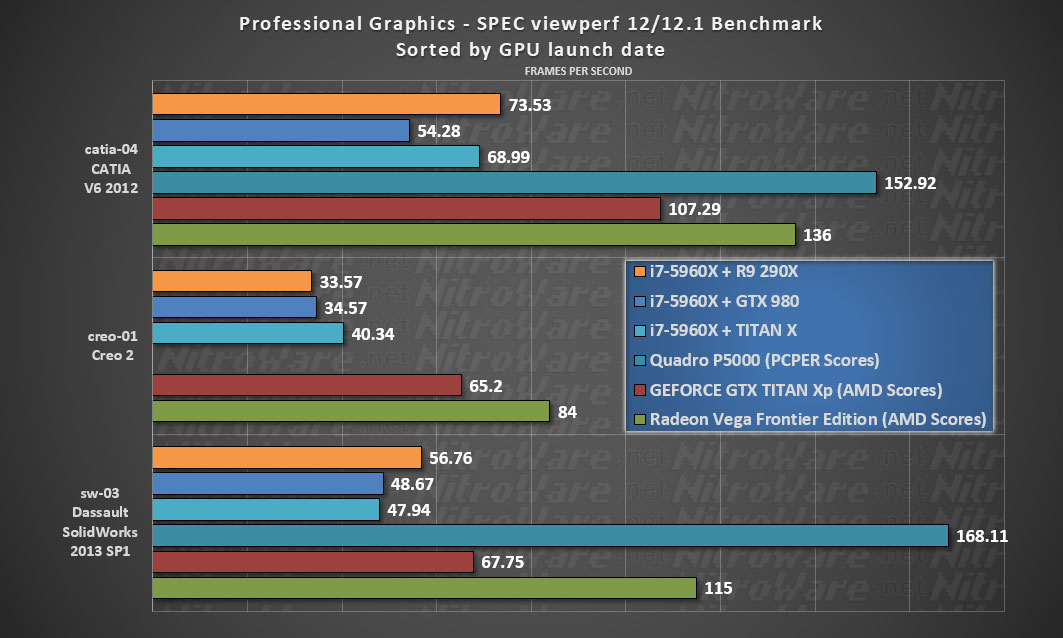
Any other performance benefits and supported pro software was not advised at press time and will be released when the driver goes live later this or next week.
This driver is a great bonus for existing TITAN users who specifically purchased the board for more than gaming purposes as well as an incentive for potential purchases.
It also puts a dent into AMD’s VEGA Frontier Edition efforts. This driver should not serve as to cannibalise Quadro boards as they serve a slightly different market. They often have additional/different display outputs as well as ISV certification. Though some vendors such as Adobe and MAGIX (who purchased VEGAS from SONY) do support consumer cards now for OpenCL and CUDA acceleration. Just giving its prosumer users a boost in widely used Premiere Pro and Vegas alone, which are used by many vloggers, beginner and professional video producers alike is a nice bonus, let alone any speedups for those who do 3D rendering.
I applaud NVIDIA for doing the right thing by its users and taking an unconventional direction (by its own history). Of course, there will be some enthusiasts out there who will scream that this is just proof that the GEFORCE line was software crippled this whole time, well frankly I don’t give a damm. This was no secret and NVIDIA would admit this in certain terms.
Unless NVIDIA has already given this upcoming driver a name, what do we call it? We already have had Detonator (remember those?) then ForceWare and now Game-Ready. I call dibs on TITANIC drivers, though there is that slight sinking problem…
We will endeavour to deliver you benchmarks of the new driver focused on the GTX 1080 as we no longer have a TITAN board. I predict it will work just fine.
ZOTAC NVIDIA GeForce GTX 1050 Australian Review
 GEFORCE GTX 1050 gives great bang-for-buck GTX 1050 is fast, small, runs cool and is the right price. In this review we compare Zotac's GTX 1050 to Gigabyte's GTX 950 OC WindForce and EVGA's GTX 960 SSC in Dirt Rally, Ashes of the Singularity, Rise of the Tomb Raider, GTA V and Doom to determine if GTX 1050 is worthy of praise. It is.
GEFORCE GTX 1050 gives great bang-for-buck GTX 1050 is fast, small, runs cool and is the right price. In this review we compare Zotac's GTX 1050 to Gigabyte's GTX 950 OC WindForce and EVGA's GTX 960 SSC in Dirt Rally, Ashes of the Singularity, Rise of the Tomb Raider, GTA V and Doom to determine if GTX 1050 is worthy of praise. It is.
Intel Core i7 Extreme Edition (Codename: Broadwell-E) Processor Australian Review
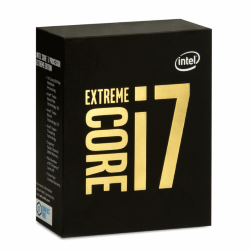 Featuring Australian, Euro and US Pricing
Featuring Australian, Euro and US Pricing
At $1569 US RRP ($2600 AUD street), the i7 6950X may be Intel’s most expensive consumer processor ever.
While the market is slowly getting used to expensive graphics cards and has been used to expensive server processors which can cost up to $5000 each, the concept of a ultra-enthusiast/high-end consumer CPU exceeding US$1000 has hit a sore nerve with some users.
For the launch of Intel’s latest extreme edition CPU, we discuss why the new flagship i7 costs the same as a crappy used car and what benefits it brings to the new trend of ‘mega-tasking’, plus we explain what is probably the key new feature for Broadwell-E, Turbo Boost Max Technology 3.0.
ASUS ROG GX700 Liquid Cooled Gaming Laptop Video Preview and Analysis.
GX700. The very best there is. When you absolutely, positively got to impress everyone in the room, accept no substitutes.We preview the long awaited GX700 before it goes on sale in March and discuss what went into to designing the machine and who it’s meant for with ASUS Australia at their ROG Gaming House in Sydney.
Read on for our initial impressions and thoughts on this $8000 AUD notebook.
Video Tour - NitroWare experiences HP's new Australian Customer Experience Centre and Intel 6th Gen ‘Skylake’ PCs
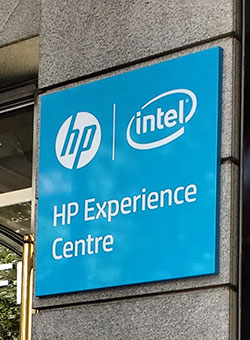 HP have opened a dedicated showroom and meeting space in the heart of Melbourne, Australia to allow customers, end users and partners to experience the entire range of HP PCs, Printers, Peripherals and Heritage as well as the ability to meet, collaborate and do business.
HP have opened a dedicated showroom and meeting space in the heart of Melbourne, Australia to allow customers, end users and partners to experience the entire range of HP PCs, Printers, Peripherals and Heritage as well as the ability to meet, collaborate and do business.
NitroWare toured the new facility and previewed the brand’s new sleek Intel 6th Generation Core 'Skylake' based Notebooks, Convertibles, All in One Pcs, Business PCs and Laser Printers which incorporate HP's new design language of designing premium products that are equally suited for the home as they are for business.
In the Printing space HP is touting what they claim is a revolutionary change in print and toner technology called Jet Intelligence, which re-engineers the way toner is formulated for largely the first time in 30 years.
In this article we present our video tour of the facility as well as demonstrations of the new PCs and Printers.
Bose SoundTouch 2015 Wireless Speaker Preview
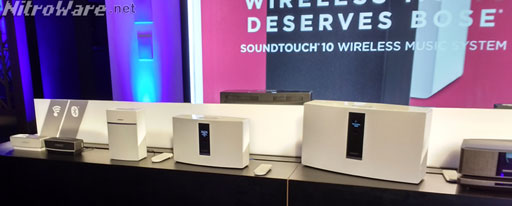 Bose's 2015 SoundTouch speakers offer internet music streaming connectivity, precision audio design and ease of use. With the compact SoundTouch 10, Bose is trying to appeal to an audience who may be new to the brand. Does Bose's efforts warrant your hard earned money? We discuss this in a preview of these new speakers.
Bose's 2015 SoundTouch speakers offer internet music streaming connectivity, precision audio design and ease of use. With the compact SoundTouch 10, Bose is trying to appeal to an audience who may be new to the brand. Does Bose's efforts warrant your hard earned money? We discuss this in a preview of these new speakers.
NVIDIA GeForce Experience Quarter 4 2015 Update Analysis
When you are on top of Graphics Mountain, it is easy to misstep and fall The latest update to NVIDIA’s GeForce Experience software adds some long waited and validated features but adds a huge ‘gotcha’ to the way graphics drivers will be made available going forward. Gamers will now be able to stream games between their devices at 4K 60 FPS with 5.1 audio as well as live stream to both twitch and Youtube at 1080p 60 FPS with the upcoming beta. Additionally, continued availability of Day 1 game-ready drivers is promised with a caveat. Controversially,, Gamers will now have to sign in with an email address to get first and exclusive access on game day.
The latest update to NVIDIA’s GeForce Experience software adds some long waited and validated features but adds a huge ‘gotcha’ to the way graphics drivers will be made available going forward. Gamers will now be able to stream games between their devices at 4K 60 FPS with 5.1 audio as well as live stream to both twitch and Youtube at 1080p 60 FPS with the upcoming beta. Additionally, continued availability of Day 1 game-ready drivers is promised with a caveat. Controversially,, Gamers will now have to sign in with an email address to get first and exclusive access on game day.
This article will overview the new release and examine all angles of NVIDIA’s new direction, for and against.
NVIDIA GEFORCE GTX 980 Ti Australian Review - TITANic graphics performance for US $649
GTX 980 cut to US $499, Third party partner GTX 980 Ti boards coming soon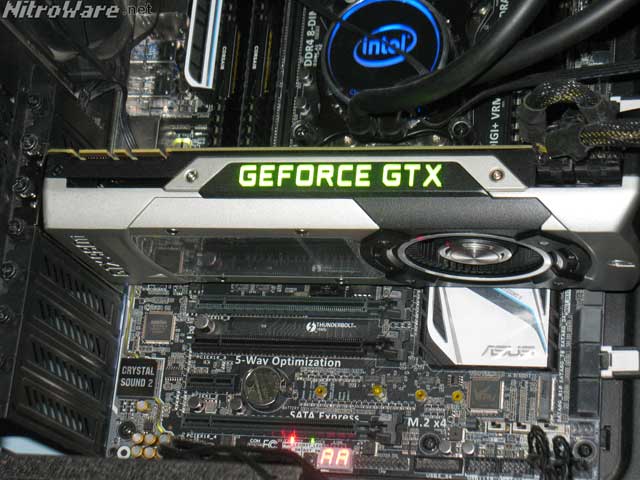
A mere quarter after launching the impressive TITAN X, NVIDIA is launching another powerful flagship graphics card GPU from its silo leveraging the technology and design from the TITAN X GPU to deliver and maintain flagship performance. Enthusiasts wanted TITAN X performance at a lower price and we have got it. In our testing, 980 Ti reference card matched and even beat TITAN X in some benchmarks, yet significantly , faster add-in-board partner custom overclocked 980 Ti are coming. All of which posing a significant thread to AMD’s plans of Fast and ‘Furious’ domination of the high end graphics segment.
NVIDIA’s GTX 980 Ti is the fastest graphics card we have tested. Combined with support for DirectX 12 Feature Level 1 and updates to G-SYNC and Gameworks to optimize the VR experience, the standard has been set for AMD’s upcoming GPU release.
Due to an extremely tight review deadline, we present overall benchmarks in our launch review. Additional Benchmarks, Third Party Board specs and pricing and hardware tear-down/analysis may be added and updated to this review in the days after publishing.
HP Zvr 23.6-inch Virtual Reality Display First Look
HP wants content creators to enter the Third Dimension with its zSpace powered 3D Monitor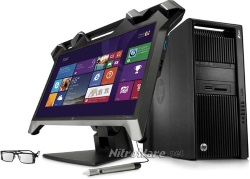 HP Australia gave NitroWare.net an exclusive preview in Sydney of its new zSpace powered 3D Virtual Reality Monitor aimed to complement its professional desktop and mobile workstation line. The Zvr Display introduces head-tracking and an interactive stylus to enable 3D/VR interactivity and manipulation via an off-the-shelf product from a mass-market OEM.
HP Australia gave NitroWare.net an exclusive preview in Sydney of its new zSpace powered 3D Virtual Reality Monitor aimed to complement its professional desktop and mobile workstation line. The Zvr Display introduces head-tracking and an interactive stylus to enable 3D/VR interactivity and manipulation via an off-the-shelf product from a mass-market OEM.
NVIDIA GeForce GTX TITAN X Video Card Australian Review
TITAN X Marks the performance Spot
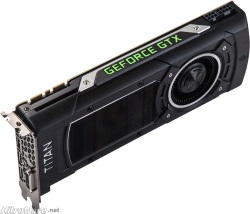 At 7 TeraFlops of compute performance, claiming to be the 'worlds's fastest GPU' the single GPU TITAN X board has big shoes to fill if it wants to also take the title of worlds fastest gaming graphics card from AMD's Dual GPU, Liquid Cooled 11.5 TeraFlop Radeon R9 295 X2.
At 7 TeraFlops of compute performance, claiming to be the 'worlds's fastest GPU' the single GPU TITAN X board has big shoes to fill if it wants to also take the title of worlds fastest gaming graphics card from AMD's Dual GPU, Liquid Cooled 11.5 TeraFlop Radeon R9 295 X2.
Older NVIDIA TITAN boards were infamous for their large video memory, double precision floating point calculation and over the top pricing. Armed with Maxwell's utility belt features of Multi-Frame Anti-Aliasing, Voxel Global Illumination, display flexibility and high efficiency. NVIDIA is trying to take the new GM200 chip and TITAN X board in a different direction, aiming at users of VR and multiple 4K displays rather than a entry level board for high precision GPU Computing.
TITAN X combined with Intel's 4th Gen Haswell-E CPU and X99 platform delivers smooth frame rates at Ultra Details when paired with a 4K 60Hz display, in addition to being power efficient. Drawing 300W typical at the wall in popular titles such as Battlefield 4, Batman Arkham Origins and Crysis 3. For now, GM200 and TITAN X is the fastest single GPU money can buy but as history tells is this wont be the case for long.
Battlefield Hardline - Developer Q&A with Visceral Games
For the launch of EA's second beta for Battlefield Hardline, we were able to preview the beta on Playstation 4 as well as participate in a Developer Q&A session with Scott Probst - Senior Producer, Evan Champlin - Senior MP Level Designer and Jeff Zaring - Lead MP Map Designer plus others from Visceral Games in the US as well as EA.
Topics covered include how Visceral contributed towards the development of DICE's Frostbite engine and modified it to provide Hardline's widely touted speed improvement, Multi Player game dynamics, the future of the Hardline franchise, sources of inspiration from film and games and how research for Hardline was conducted.
The NVIDIA GEFORCE GTX 960 REVIEW - EVGA SSC Edition
Australian exclusive review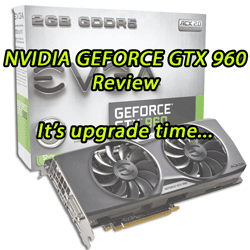
NVIDIA's tradition and legacy has been to always produce a compelling mid range GPU appealing to the 'sweet spot', that is the optimal performance/value offer to the large majority of semi-casual,budget concious PC gamers who would still want decent gaming performance. 2015 is no exception with the GTX 960 replacing the GTX 760 and delivering what NVIDIA has promised of the card, a cool, quiet, over-clockable and value for money card.
In this review we compare the GTX 960 (specifically EVGAs SSC model with ACX 2.0 cooling) to both MSI's GEFORCE GTX 760 HAWK and RADEON R9 270X HAWK, the 960's predecessors from 2013 as well as an overview at how the GTX 960 performs at 4K compared to its bigger brother GTX 980.
We were able to confirm GTX 960 offers more performance at lower power.
NVIDIA'S GEFORCE GTX 980 Apollo 11 Lunar Landing Tech Demo tested
 NVIDIA has a rich history of developing in house tech demos to showcase each new major GPU they develop. Although they are not the only company to do so, ATI later AMD and MATROX did suit, NVIDIA's demos are the most memorable to enthusiasts and industry insiders.
NVIDIA has a rich history of developing in house tech demos to showcase each new major GPU they develop. Although they are not the only company to do so, ATI later AMD and MATROX did suit, NVIDIA's demos are the most memorable to enthusiasts and industry insiders.
Over the past decade we have had NALU the mermaid (remember her? years before the whole AMD TressFX/NVIDIA hairworks friendly competition), the elves Dawn and Dusk, a rocket powered sled and others.
For Maxwell, which NVIDIA claims is the most advanced GPU ever made, the firm felt they had to go one better over these previous 'trivial' demos which were mainly aimed at the 'male gamer market'. This time around,NVIDIA simulated and replicated the Apollo 11 moon landing using Unreal Engine 4, complete with authentic star field, textures, lighting and NASA radio chatter.
Lighting is the key term here, as one of the main purposes of the Apollo 11 demo is to showcase the new Voxel based lighting structure that GTX 980 and GTX 970 can use in supported games to support global illumination. For these hardware the VGLI solution is efficient, fast and as proven by the tech demo, accurate to the source material. And what source material is lighting heavy and well suited for a lighting tech demo? the controversial 'faked' moon landings.
Although NVIDIA demonstrated Apollo 11 tech demo at their global GAME24 launch and gamer event as well as regional editors days for the tech media, users and media could not try the demo for themselves, until now as NVIDIA has finally provided the demo for download.
We used Shadowplay to capture the demo, running on a rig powered with a i7-4790K CPU, MSI Z97 Gaming 7 motherboard and single reference NVIDIA GTX 980 graphics card to capture the demo, complete with performance statistics provided by MSI afterburner software. The demo really needs 2 cards to work optimally and is locked at 1080p. 4K users are out of luck, and no it does not work on other GPUs due to a hardware check.
Our 60 FPS video below shows the entire demo, complete with GPU utilization, frame rate and temperature overlay
Apollo 11 Lunar Landing for GTX 980/970 only can be downloaded here, as well as other NVIDIA tech demos.
Monster Cable Premium Black 27.7 Gbps high bandwidth HDMI 2.0 cable test
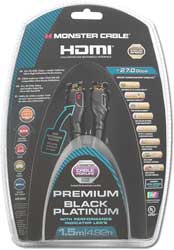 No two cables are the same, mechanically or electrically. What is undeniable with copper cables is the requirement of higher specification cable assemblies to meet higher bandwidth requirements. Anyone who thinks otherwise is grossly misinformed. This is the case with many types of cables whether they be coaxial cables for RF signals, twisted pair copper for data or telephony transmission.
No two cables are the same, mechanically or electrically. What is undeniable with copper cables is the requirement of higher specification cable assemblies to meet higher bandwidth requirements. Anyone who thinks otherwise is grossly misinformed. This is the case with many types of cables whether they be coaxial cables for RF signals, twisted pair copper for data or telephony transmission.
2014 signaled the arrival of HDMI 2.0 for consumers with displays from Panasonic and Graphics cards from NVIDIA, but what about cables?
Thanks to an opportunity from Monster Cable, we were able to compare the bandwidth handling capability of several HDMI cables ranging in price using professional equipment, testing whether these cables can handle the minimum 18 Gigabit/s data rate required to support formats under HDMI 2.0.
The cheapest and cheap cables we tested failed at 18 Gigabit/s, meaning if used with HDMI 2.0 devices and very high resolution, colour depth and refresh supported under HDMI 2.0, pixelation,jitter and other issues are possible.
Read on to see a video of the HDMI cable Eye Pattern and Bit Error Rate tests as well as Q&A with Monster Cable.
4th Gen Intel Core "Devil's Canyon" Processor Family Preview
 At over 4GHz, Intel's i7-4790K chip turns the volume knob to 11 for raw CPU performance.
At over 4GHz, Intel's i7-4790K chip turns the volume knob to 11 for raw CPU performance.
For 2014, Intel is introducing processors that have been additionally enhanced and tweaked for the enthusiast market more than with previous generations.
While a 4GHz Intel chip may seem an impressive in the decades long clock speed race, it actually is not that revolutionary and is more a sign of things to come milepost rather than the destination.
Ubisoft's Watch Dogs now bundled with NVIDIA GeForce video cards in Australia & New Zealand
Now Aussies too can pretend to be Aiden PearceNVIDIA have finally announced their quarterly GeForce game bundle for Australia-New Zealand, being Watch Dogs unsuprisingly.
Unlike AMD's Never Settle Forever, NVIDIA's game bundles are region specific and do not launch simulatenously. ANZ bundles are typically delayed and certain titles may not be avalible. For instance the outgoing GeForce bundle offered the Unreal Engine 4 powered 'Daylight' but this component of the game bundle was not offered here, only the free to play components were.
Ubisoft's Watch Dogs is one of the most anticpiated AAA games from the past twelve months, if you have heard of it already we do not need to repeat the hype once again, especially since press such as CNET, Destructoid and MTV have praised the game pre-release.
The Watch Dogs bundle continues NVIDIA's long standing relationship with Ubisoft, going as back back as the original Splinter Cell Trilogy days, providing not only game bundles for Specific or all Add-In-Card Partners, but also taking advantage of 3D instructions and features in game. For instance Splinter Cell Pandora Tomorrow and Chaoes Theory leveraging bump mapping and Shader Model 3/Directx 9c respectively. Matrox boards could not run these properly for instance.
Ten years later the trend continues with GeForce's Secret Sauce recipie combining HBAO (Horrizon-based ambient occlusion) and TXAA (Temporal Anti-Aliasing) to the Watchdogs Soup.
Gamers must also ensure they purchase one of the above cards from a particpating retailer who will issue the game code. The game code can be redeemed for a Ubisoft Play CDKEY via NVIDIA's redemption form http://www.geforce.co.uk/games-applications/pc-games/watch-dogs/bundle-au which is then submited into Ubi's store or Play client to activate the game. This is the same procedure gamers are familar with when redeeming AMD Never Settle or Intel Gaming promotional codes.
Eligble Australia/New Zealand retailers: Not Avalible at press time
Eligble North American retailers http://www.geforce.com/games-applications/pc-games/watch-dogs/bundle
Eligble United Kingdom/Europe retailers http://www.geforce.co.uk/games-applications/pc-games/watch-dogs/bundle
Eliglbe board partners: ASUS, EVGA, Gainward, Galaxy, Gigabyte, Inno3D, MSI, Palit, Zotac
Eligble boards : NVIDIA GeForce GTX 660, 660 Ti, 670, 680, 690, 760, 770, 780, 780 Ti, TITAN and TITAN Black. The infamous and illusive Titan Z is not eligble for a free game
Bundle Time Frame: May 9 to July 6, Unclaimed codes Expire July 31.
Seagate Business 4-Bay 16TB NAS Review
It's all about the private cloud...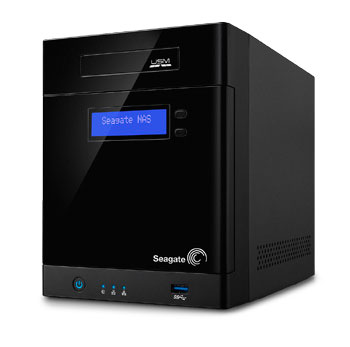
Seagate is relatively unknown for Network Attached Storage and have tried to add their own twist via unique features for their consumer and business oriented models. However, like competing devices, NAS are heavily reliant on hardware specifications to perform as advertised. We review Seagate's 16 TB model for Business and explain why processing power and fast interfaces like USB 3.0 matter for a storage device
MSI Radeon R9 270X HAWK & GeForce GTX 760 HAWK Video Card Review
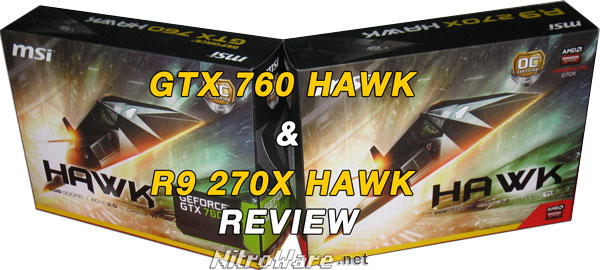
The choice of AMD or NVIDIA graphics is constantly becoming a difficult choice for enthusiasts thanks to an almost level playing field as a result of strong competition between AMD and NVIDIA.
Both brands ave their pros and cons but offer a very similar experience. Choice has become a more personal one, often of brand loyalty than technical.
Add in board partners are constantly releasing custom design graphics cards which squeeze every bit of performance and cooling for both brands equally.
HAWK - MSI's second highest model line (there is Gaming, Hawk and Lightning) offers strong overclocking and tweaking without being too intimidating to the enthusiast who isn't into modding or custom cooling. Their latest version is no exception.
In our fly-off, we were quite impressed with the speed and handling of both the AMD Radeon R9 270X and NVIDIA GeForce GTX 760 based MSI HAWK cards.
Out of the two cards, neither was the outright winner. The winner, however is the consumer. Read on to find out why.
Adobe Photoshop CC and AMD Radeon GPU Smart Sharpen Benchmark using OpenCL
Adobe Photoshop CC + AMD Radeon = Much Acceleration...
The latest patch to Creative Cloud, combined with an AMD Radeon GPU and the latest drivers finally brings the power of OpenCL to Photoshop
Adobe Photoshop users no longer have to miss out on the GPU Compute Acceleration benefits previously available only to Adobe's video editing applications thanks to heavy inclusion of OpenCL support across their software and especially, enhancements made to OpenCL performance in the recent 14.2 patch to Photoshop. Our testing shows a 16x speed up with OpenCL.
AMD Radeon R9 290X Video Card Review and Analysis
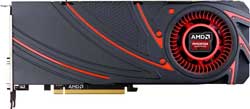
AMD's Radeon R9 290X video card may be a watershed moment in PC graphics, Powered by the 'Hawaii' GPU based on an beefed up version of the Graphics Core Next architecture, this is the first card 'designed for gaming at 4K resolution'.
We analyse the AMD Radeon 290X Hawaii GPU's design and specs, compare AMD and NVIDIA's current GPU and remember Graphics Cores Past. Ten years ago, the for the time powerful R350 based ATI Radeon 9800 Pro launched, 64-bit computing became mainstream and USB 2.0 as well as Wi-Fi became ubiquitous.
The 290X is the latest in what has been a successful line of single GPU high end DirectX 11 Radeon parts from ATI/AMD: HD 5870, HD 6970 and HD 7970. Read on to see if Hawaii and R9 290X continues this legacy.
Never Settle: Forever game bundle: What you need to know and what AMD could have done differently.
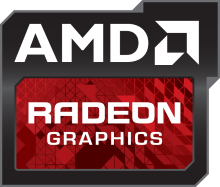 2013 has been one of the busiest years for PC gaming /enthusiast computing on record. We have seen quarterly announcements, promotions and initiatives from AMD and NVIDIA, competition has never been more fierce. Today, the latest iteration of AMD's game bundle program goes into effect where you can finally choose your games, embodying the message and meaning behind the program name, Never Settle.
2013 has been one of the busiest years for PC gaming /enthusiast computing on record. We have seen quarterly announcements, promotions and initiatives from AMD and NVIDIA, competition has never been more fierce. Today, the latest iteration of AMD's game bundle program goes into effect where you can finally choose your games, embodying the message and meaning behind the program name, Never Settle.
The program has been praised and controversial at the same time, with a major issue being devalued and duplicate game titles. This update goes some way to improving the situation for keen gamers who keep their game libraries up to date. It does not satisfy everyone though.
We review AMD-ATI game bundle history over the past decade and discuss what AMD could have done differently with Never Settle Forever.
Updated 11-September: The first update to Never Settle Forever has been announced being Deep Silver's Saints Row 4 and Australian specific avalibility.
Intel 4th Gen 'Haswell' real world gaming performance
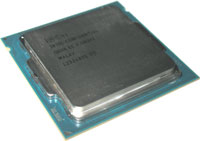 In the first of our Haswell review series, we covered the worst-case performance of the much-improved Intel HD Graphics by testing it at max resolution and details. However, these scenarios are not the ideal conditions for the design and Intel’s fourth Gen HDGPU runs much better at moderate settings such as 720p.
In the first of our Haswell review series, we covered the worst-case performance of the much-improved Intel HD Graphics by testing it at max resolution and details. However, these scenarios are not the ideal conditions for the design and Intel’s fourth Gen HDGPU runs much better at moderate settings such as 720p.
In this edition, we have tested Intel’s HD Graphics 4600 at several realistic and best case game settings with just three very popular titles, Battlefield 3, Bioshock Infinite and DIRT 3. Given Battlefield 3’s popularity, we even dive down to the individual frame level to show the level of smoothness of reported frame rates for this game with Intel and NVIDIA graphics. Battlefield 3 running on Intel HD 4600 had an acceptable frame rate but was not smooth on automatic detail settings.
An Evening with Battlefield 4
 Battlefield 4 is on track for release and apart from sudden hardware failure, supposedly is playable. At a Sydney preview event, we got a glimpse of BF4's cinematic aspirations as well as an insight into what makes a Battlefield game from a development standpoint. Supposedly, if gamers buy both Call of Duty and Battlefield, everyone wins.
Battlefield 4 is on track for release and apart from sudden hardware failure, supposedly is playable. At a Sydney preview event, we got a glimpse of BF4's cinematic aspirations as well as an insight into what makes a Battlefield game from a development standpoint. Supposedly, if gamers buy both Call of Duty and Battlefield, everyone wins.
Intel 4th Gen Core i7-4770K 'Haswell' CPU Performance Review
Haswell with a [Corsair] Vengeance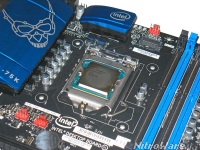 New computer architecture can often offer debatable performance benefits at launch time. We look at what speed-up Intel's i7-4770K offers over 3770K as well as the integrated HD Graphics performance. Haswell's CPU architecture delivers what was predicted, moderate performance improvement with significant power savings, i7-4770K achieving 40 watts at idle and 15 watt reduction in CPU loads.
New computer architecture can often offer debatable performance benefits at launch time. We look at what speed-up Intel's i7-4770K offers over 3770K as well as the integrated HD Graphics performance. Haswell's CPU architecture delivers what was predicted, moderate performance improvement with significant power savings, i7-4770K achieving 40 watts at idle and 15 watt reduction in CPU loads.
Despite these CPU improvements it is the updated graphics performance that provides shock and awe. Haswell's integrated 'GT2' HD Graphics 4600 GPU delivers one-third to half the performance of NVIDIA's GeForce GTX460. Has Intel has finally delivered on its promise of better graphics? With such promises in tech land, the more things change the more they stay the same. Read on to find out why and more detail on Haswell's Desktop performance.
Our experience with AMD's Never Settle Reloaded game bundle - Trouble with Ubisoft Uplay | Updated
How to troubleshoot invalid Ubisoft Uplay game key codes
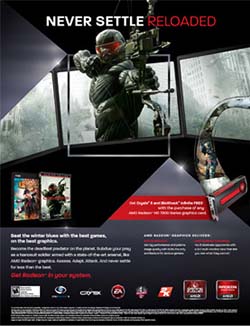 AMD, NVIDIA, OCZ and Samsung bundle codes for free Ubisoft games with their hardware such as Far Cry 3, Assassin's Creed and Far Cry 3: Blood Dragon.
AMD, NVIDIA, OCZ and Samsung bundle codes for free Ubisoft games with their hardware such as Far Cry 3, Assassin's Creed and Far Cry 3: Blood Dragon.
As a result of differences in the way Ubisoft's Uplay digital distribution works compared to EA Origin and Valve Steam, many users have had issues redeeming their codes with the "invalid promo code" error being common.
One of the reasons for this occurring is regions-specific game codes which cannot be redeemed in other regions.
We refer to our experience redeeming Ubisoft game codes through AMD's Never Settle Reloaded promotion and explain how we diagnosed our problem.
Intel 4th Gen Core Haswell CPU and Graphics Preview - See the future of PC graphics through Intel's Iris.
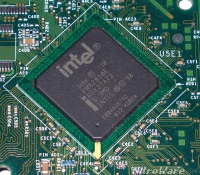 With the June 4 launch date of Intel's Haswell CPUs at Computex a matter of weeks away, we can now reveal the launch model lineup and theoretical graphics performance. Although core architecture of Haswell graphics has been known for some time, what has been kept under wraps was how each class of graphics would be segmented and which parts are aimed at which markets.
With the June 4 launch date of Intel's Haswell CPUs at Computex a matter of weeks away, we can now reveal the launch model lineup and theoretical graphics performance. Although core architecture of Haswell graphics has been known for some time, what has been kept under wraps was how each class of graphics would be segmented and which parts are aimed at which markets.
Haswell will offer optional higher performing graphics in its Desktop, Mobile and Ultrabook segments across the board compared to Ivy Bridge which offered a single class of graphics in mainstream mobile. Haswell is claimed to have a up to 3x improvement on graphics performance alone however raw numbers are not the complete story.
Intel has also though to sees eye-to-eye with its competition by giving its new graphics a brand name to make it as identifiable as AMD Radeon, NVIDIA GeForce and Qualcomm Adreno. That name is Intel Iris.
Price Gouging – Australians pay up to twice as much for Microsoft Windows 7 Anytime Upgrade but not for Windows 8 than the US
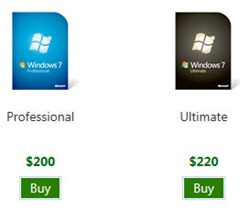 Australians pay one and a half times on average up to twice as much as the USA for identical Windows Anytime Upgrade either as a digitally distributed or boxed product. Both distribution methods offer an identical product as all Windows Anytime Upgrade consists of is an upgrade key which will ‘unlock’ the users currently installed version of Windows 7 to the next higher version as purchased.
Australians pay one and a half times on average up to twice as much as the USA for identical Windows Anytime Upgrade either as a digitally distributed or boxed product. Both distribution methods offer an identical product as all Windows Anytime Upgrade consists of is an upgrade key which will ‘unlock’ the users currently installed version of Windows 7 to the next higher version as purchased.
Changing the Windows Region from AUS to USA will change the price that is displayed.
Pricing is not the half of it – old stock generate errors that Microsoft are aware of but will be unanticipated to the consumer and Windows 8 offers a much more affordable upgrade path. Users who need to stick with Windows 7 are disadvantaged.
Bytepac Eco Friendly HDD Enclosure Review
 We look at a rather unique external hard disk enclosure that promises to be technically advanced as well as eco-friendly called Bytepac.
We look at a rather unique external hard disk enclosure that promises to be technically advanced as well as eco-friendly called Bytepac.
This cardboard product does not mean we have to skimp on capacity or performance however, we paired the BytePac kit with Seagate's new power efficient yet speedy Barracuda 3TB drive.
We also discuss the pros and cons of external drive enclosures.
Sapphire AMD Radeon HD 7950 OC Graphics Card and CPU scaling Review
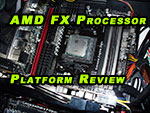 We investigate how the CPU influcences the performance of Sapphire's Radeon HD7950 OC graphics card by testing it with AMD A6-3650 APU and AMD FX-6100 CPU against the combination Intel's i7-3960X and AMD's Radeon HD7970. What we found was with our test suite AMD A6 and AMD FX offered better performance per dollar than Intel's flagship i7.
We investigate how the CPU influcences the performance of Sapphire's Radeon HD7950 OC graphics card by testing it with AMD A6-3650 APU and AMD FX-6100 CPU against the combination Intel's i7-3960X and AMD's Radeon HD7970. What we found was with our test suite AMD A6 and AMD FX offered better performance per dollar than Intel's flagship i7.
CeBIT Australia 2012 Preview
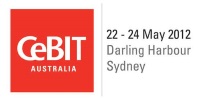 We will be live tweeting and posting from CeBIT AUSTRALIA 2012 on 22 to 24 May 2012 !
We will be live tweeting and posting from CeBIT AUSTRALIA 2012 on 22 to 24 May 2012 !
We expect some major announcements, first looks and new products from a variety of Tier 1 hardware vendors, some of which we have managed to obtain exclusives for.
Dell, Fujitsu, HP, Lenovo and Samsung will be announcing and demonstrating their new product line-ups for 2012 to support new generation computing platforms that have just launched such as AMD's Trinity APU and Intel's 'Ivy Bridge' 3rd Generation Core Processor. Some of these product updates are hush hush so we cant talk about them just yet and we will be bringing you these exclusive unveils as soon as possibly allowed.
Sennheiser is announcing some new gaming headsets and sound cards while Western Digital will be demonstrating Thunderbolt connectivity. Will D-Link and other network vendors have any good N900 or 802.11ac routers ? We will find out.
The National Broadband Network (NBN) Truck may give us a practical glimpse into how the consumer will access the NBN via the Customer Premises Equipment (CPE) and what end user speeds will be possible. Spotify, the popular cloud music streaming service has also taken the opportunity to launch in Australia at this time.
Our hardware centric coverage this year is supported by Blackberry Australia and Toshiba Ultrabook
Follow us on Twitter @nitroware
Cooler Master's Trigger keyboard might just be the perfect gamers keyboard
Cooler master claims its Trigger Mechanical keyboard is the devasting new weapon of choice on the war torn frontlines of gaming...
We preview Cooler Masters's Trigger Mechancial Keyboard, which the manufacturer claims can command the power and strategic advantage of a military platoon and is prepared with a full featured arsenal that incorporates a selection of extremely high durability CHERRY MX Black, Blue, Brown, or Red switches as well as a Numeric Keypad in a traditional 104 key form factor.
ZOTAC "Inner-Beauty" Small Form Factor PC Preview featuring Z77-ITX WiFI and GeForce GTX 680 AMP! Edition
Big things can be found in small packages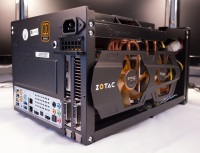
Want a high end CPU, graphics card, large storage and full functionality yet not in a 65 CM tall PC tower case that weighs 20 KG? Well suffer no longer, Zotac the specialist vendor of Mini-ITX motherboards and Small Form Factor PCs as well as a main NVIDIA partner has shown off their concept for a PC that can prove otherwise. The system combines Intel's fastest 3rd generation Core i7 CPU and Zotac's fastest NVIDIA GTX 680 graphics to deliver the best performance possible from a small cube PC let alone a large tower. We preview Zotac's "Inner-Beauty" demo system and analyze the pros and cons that come with such a small system.
Intel CPU Protection Plan for overclockers – Ploy or Promise ?
Trial a gives a glimpse into future Intel high end CPUs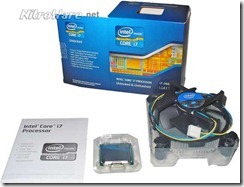 Intel announced today their ‘Performance Tuning Protection Plan’ that would offer a limited, one time warranty replacement for selected Unlocked/Extreme class CPUs that are damaged during overclocking if the owner pays an additional fee of $20 to $35. For enthusiasts or ultra-gamers that tweak and play with their system settings this might seem like a gift from above however there is more to this programme than Intel reaching out to help enthusiasts…
Intel announced today their ‘Performance Tuning Protection Plan’ that would offer a limited, one time warranty replacement for selected Unlocked/Extreme class CPUs that are damaged during overclocking if the owner pays an additional fee of $20 to $35. For enthusiasts or ultra-gamers that tweak and play with their system settings this might seem like a gift from above however there is more to this programme than Intel reaching out to help enthusiasts…
This replacement programme may be partly driven by business and technical pursuits rather than pure good will towards overclockers. The company already affords that to those users through its product design, hardware and software. We explain why in this editorial.
AMD Radeon HD7970 versus NVIDIA GeForce GTX460 SLI Performance Review
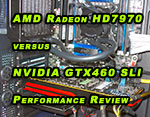
The AMD Radeon HD7970 is marketed as the 'World's fastest single-GPU graphics Card' and many reviews have compared it against the GTX580 which is its competitor. What about everyone else? Not everyone owns a GTX580 and many users have older cards, some in SLI or Crossfire who are quite happy with their setups. Not all gamers play at 2560x1600 or higher either.
When a user upgrades their CPU and Motherboard, they will likely keep their old cards especially if they support DirectX 11. To find out how the HD7970 fares against such older cards we compared it pair of NVIDIA GTX460s in SLI
This review combines the best gaming platform Intel has to offer - the i7-3690X CPU and DX79SI motherboard with the best graphics technology AMD has to offer, the Radeon HD7970 to create one of the fastest systems on the market. Can a single Radeon HD7970 from 2011-12 beat two mid end GeForce GTX 460 in SLI from 2010? The results we found were quite interesting.
Intel Desktop Board DX79TO Preview | Sandy Bridge-E performance on a budget
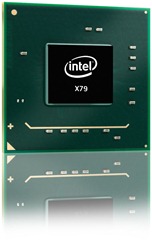 Intel have to have shaken the skeleton in their closest by offering a cut price version of their Extreme branded X79 Desktop board that sells for $100 less than the widely reviewed DX79SI. The DX79TO is one of the cheapest premium X79 boards on the market yet still retains the 8 memory DIMM/64GB memory support in the standard ATX dimensions.
Intel have to have shaken the skeleton in their closest by offering a cut price version of their Extreme branded X79 Desktop board that sells for $100 less than the widely reviewed DX79SI. The DX79TO is one of the cheapest premium X79 boards on the market yet still retains the 8 memory DIMM/64GB memory support in the standard ATX dimensions.
We preview the DX79TO Desktop Board from Intel - A reduced cost version of Intel's flagship DX79SI Motherboard for Intel 2nd generation Core i7-3000 series and socket LGA-2011 and explain why you should consider a cheaper X79 motherboard.
Trick or Treat – we bring you tech candy, err the latest Intel X79 Motherboards and other goodies
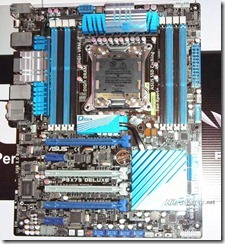 We Aussies do things differently ‘down under’. Instead of hunting for spooks, ghouls, goblins or vampires this Halloween we went hunting for production series Intel X79 chipset motherboards from ASUS, ASRock, and Gigabyte in Sydney, Australia and what a haul of sweet tech bounty we ended up with.
We Aussies do things differently ‘down under’. Instead of hunting for spooks, ghouls, goblins or vampires this Halloween we went hunting for production series Intel X79 chipset motherboards from ASUS, ASRock, and Gigabyte in Sydney, Australia and what a haul of sweet tech bounty we ended up with.
Mainstream Computing Showdown - AMD A6 APU v Intel 2nd Gen Core i3 CPU
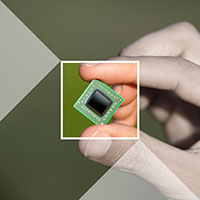 AMD have made some bold claims about their 'Fusion' architecture, especially their A-Series 2011 mainstream computing product range. The industry leader went as far to make some very big claims by declaring their A-series APU as the company's most important product in their history and a computing game changer as it saw the future of computing being visually and graphically rich.
AMD have made some bold claims about their 'Fusion' architecture, especially their A-Series 2011 mainstream computing product range. The industry leader went as far to make some very big claims by declaring their A-series APU as the company's most important product in their history and a computing game changer as it saw the future of computing being visually and graphically rich.
This raises several questions: Is AMD's new mainstream computing solution - their A-Series 'Fusion' APU, hero or hype? How relevant is graphics performance with modern software especially integrated graphics? Which 2011 mainstream PC is a better choice for the consumer - AMD or Intel?
To answer these questions we put AMD's A6-3650 APU and its competitor - Intel's 2nd Generation Core i3-2100 CPU through their paces with the full spectrum of tests ranging from everyday audio/video applications, to industry standard benchmarks, popular 3D games, Professional Digital Content Creation software and Web browsing.
To show the relevance of graphics performance in a mainstream computer in 2011 we also included two other systems. A high-speed Intel Core 2 Duo system fitted with a High Performance graphics card from NVIDIA to show the boost powerful graphics can give an older CPU in everyday applications and a low-speed Intel Core 2 Duo system with older Integrated Graphics to show how far 'integrated' graphics has changed in just a few years.
Where did all my printer ink go? Part 2 - Epson
 Are you are finding that your inkjet printer ink is being used up quicker than you like? There is valid explanation for this. The ink is going down the drain, literarily.
Are you are finding that your inkjet printer ink is being used up quicker than you like? There is valid explanation for this. The ink is going down the drain, literarily.
Part 1 of our article series showed how a modern printer can fail due to excess ink wastage from heavy or non optimal use.
In Part 2 of our article series we compare our earlier example to a similar printer of specification and age that been has operated more efficiently and highlight the differences between these cases and the overall designs of these examples of moderns printers.
Where did all my printer ink go? Part 1 - Brother
 Are you are finding that your inkjet printer ink is being used up quicker than you like? There is valid explanation for this. The ink is going down the drain, literarily. This is not neccessarily a bad thing however. Read on to learn how the ink in your printer is used in your inkjet printer.
Are you are finding that your inkjet printer ink is being used up quicker than you like? There is valid explanation for this. The ink is going down the drain, literarily. This is not neccessarily a bad thing however. Read on to learn how the ink in your printer is used in your inkjet printer.
Gigabyte GZ-X1 Mid Tower ATX Computer Case Preview
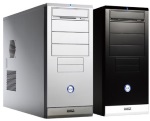 Choosing a Computer case is near impossible these days due to the multitude of brands, shapes, styles, finishes and colours available. The high end of the market is covered with very good enthusiast or niche cases but what about the bottom of the spectrum? Can a half decent case that works properly be found at an affordable price? We think we found one, Read on to find out more.
Choosing a Computer case is near impossible these days due to the multitude of brands, shapes, styles, finishes and colours available. The high end of the market is covered with very good enthusiast or niche cases but what about the bottom of the spectrum? Can a half decent case that works properly be found at an affordable price? We think we found one, Read on to find out more.
How to install Windows Server 2008 R2 or Windows 7 using a LSI 3ware 9650SE RAID card
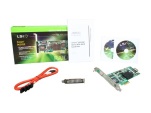 This is the missing manual you have been looking for…
This is the missing manual you have been looking for…
This article relates to Modern RAID controller cards made by LSI 3ware that do not work with Microsoft Windows 2008 R2 or Windows 7 out of the box. This article will explain and illustrate the process to enable these cards to work correctly with these operating systems by installing a required firmware update to the RAID card. This article is aimed towards IT professionals
Issues with Realtek High Definition Audio device driver for Windows XP
![]() Owners of Giga-Byte motherboards, especially socket 775 models that use the Dolby Digital Live feature of the Realtek HD Audio on these boards should revert to an older version of the audio driver such as Release 2.44 to reclaim bass management and Dolby processing features.
Owners of Giga-Byte motherboards, especially socket 775 models that use the Dolby Digital Live feature of the Realtek HD Audio on these boards should revert to an older version of the audio driver such as Release 2.44 to reclaim bass management and Dolby processing features.
The front audio ports on my PC do not work – why is this and how can I fix this?
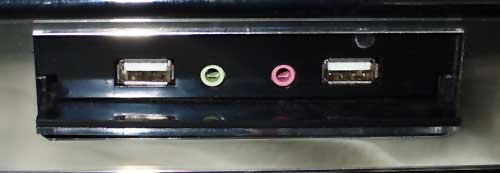 When things do not work as expected it is often due to standards not being followed. Hardware or software can often be non-compliant. If you cannot hear any audio via your front audio ports and you have a relatively modern system there is a easy fix for the problem.
When things do not work as expected it is often due to standards not being followed. Hardware or software can often be non-compliant. If you cannot hear any audio via your front audio ports and you have a relatively modern system there is a easy fix for the problem.
How to create a dedicated Voice over IP headset for your PC - for free. Part 2.

If your computer contains a Realtek High Definition Audio system from Realtek semiconductor, you can enable a free feature to dedicate the front audio ports of the system chassis as a dedicated headset connection for applications such as voice communication and enhance your Voice-over-IP experience.
Part 2 - Configuring an IP soft phone to use a headset
- How to create a dedicated Voice over IP headset for your PC - for free. Part 1.
- Netcomm 3GW9T - Telstra 7 series 3G Wireless Internet Gateway Review
- Edifier S550 5.1 Multimedia Speaker In-Depth Review
- Vodafone McLaren Mercedes U Disk by aigo Review
- Telstra Turbo 7 Series 3G Wireless Gateway - First Impressions
- Creative Labs announce the HN-605, a compact and affordable noise cancelling headphone
Page 1 of 2
